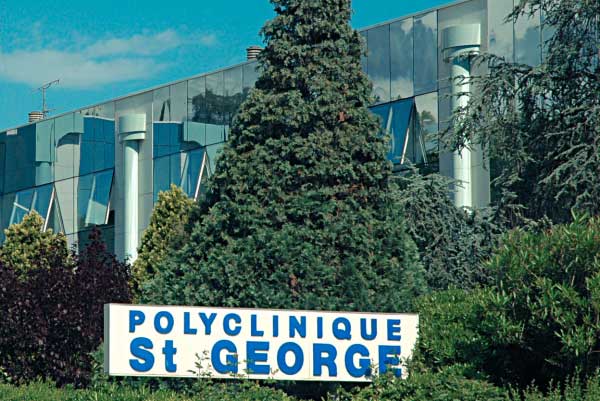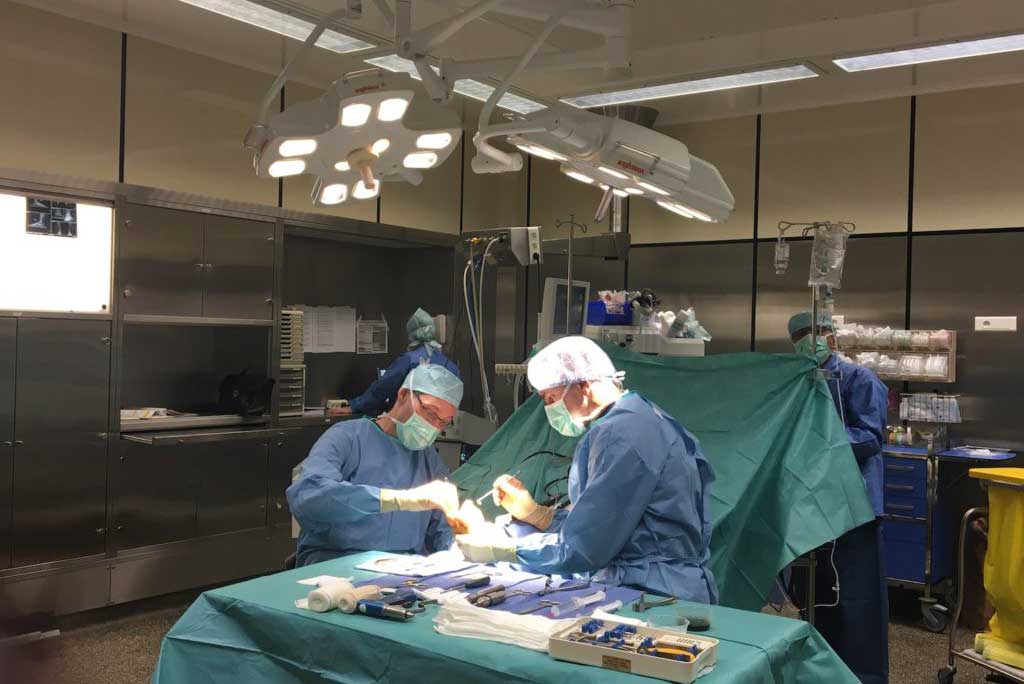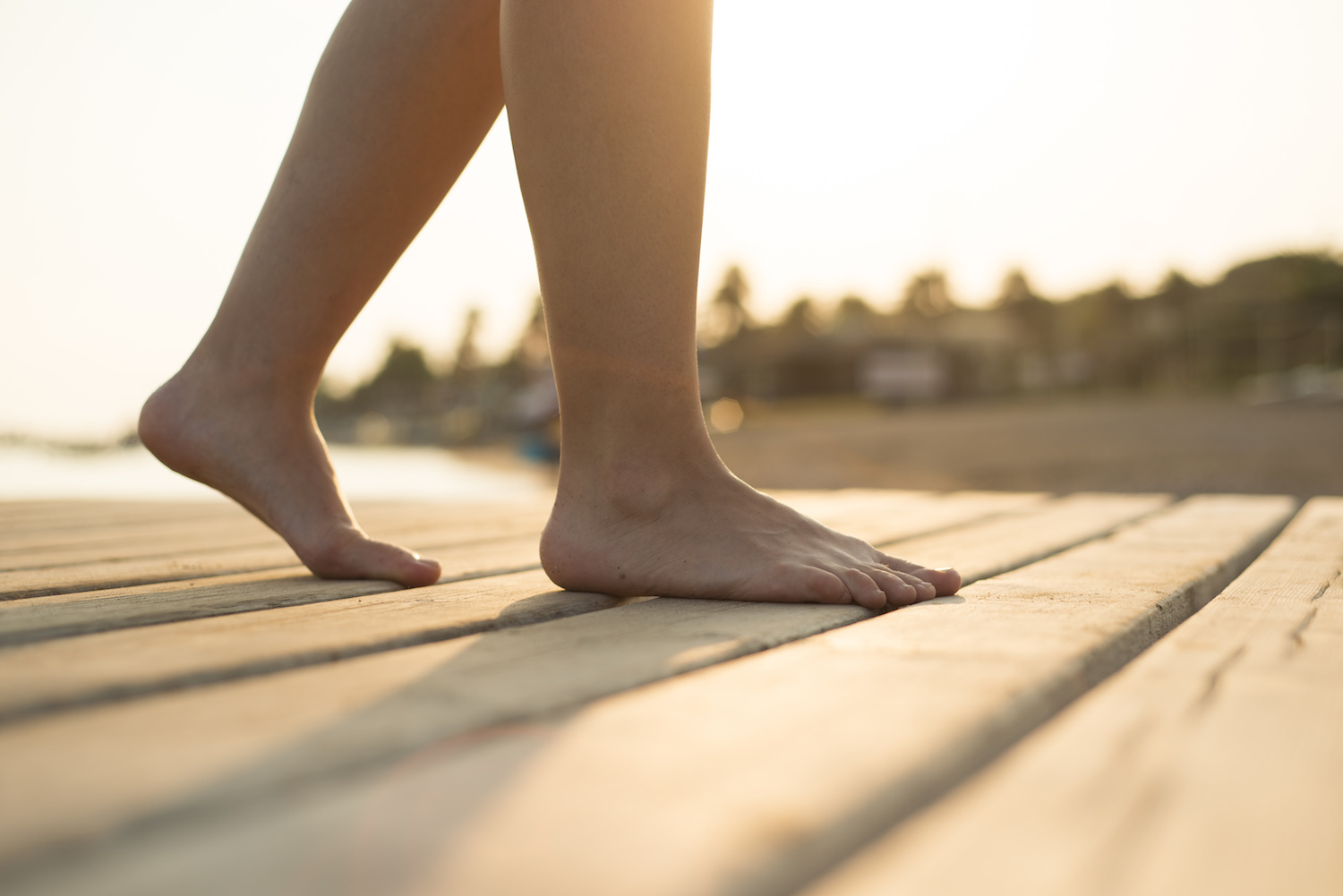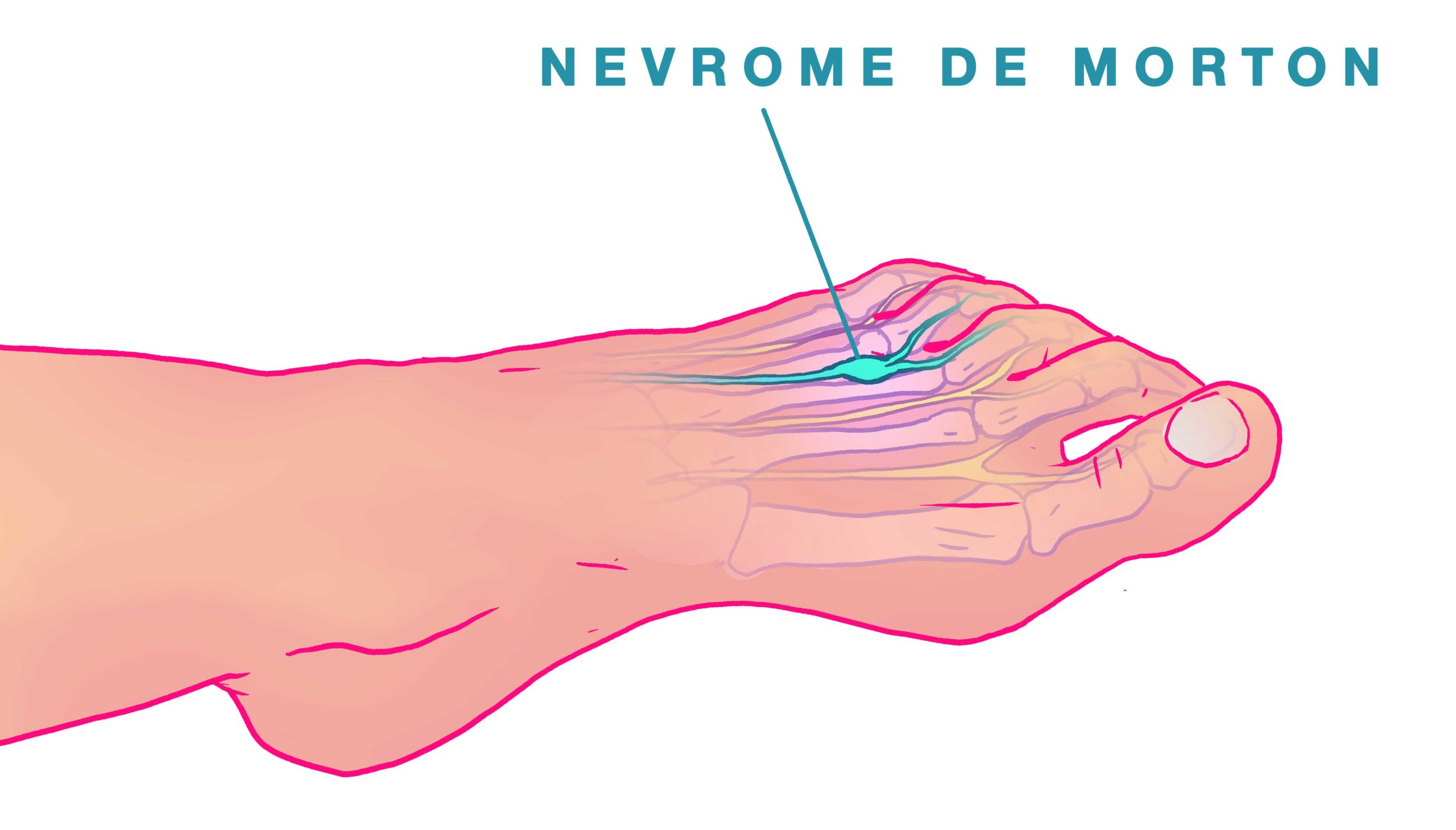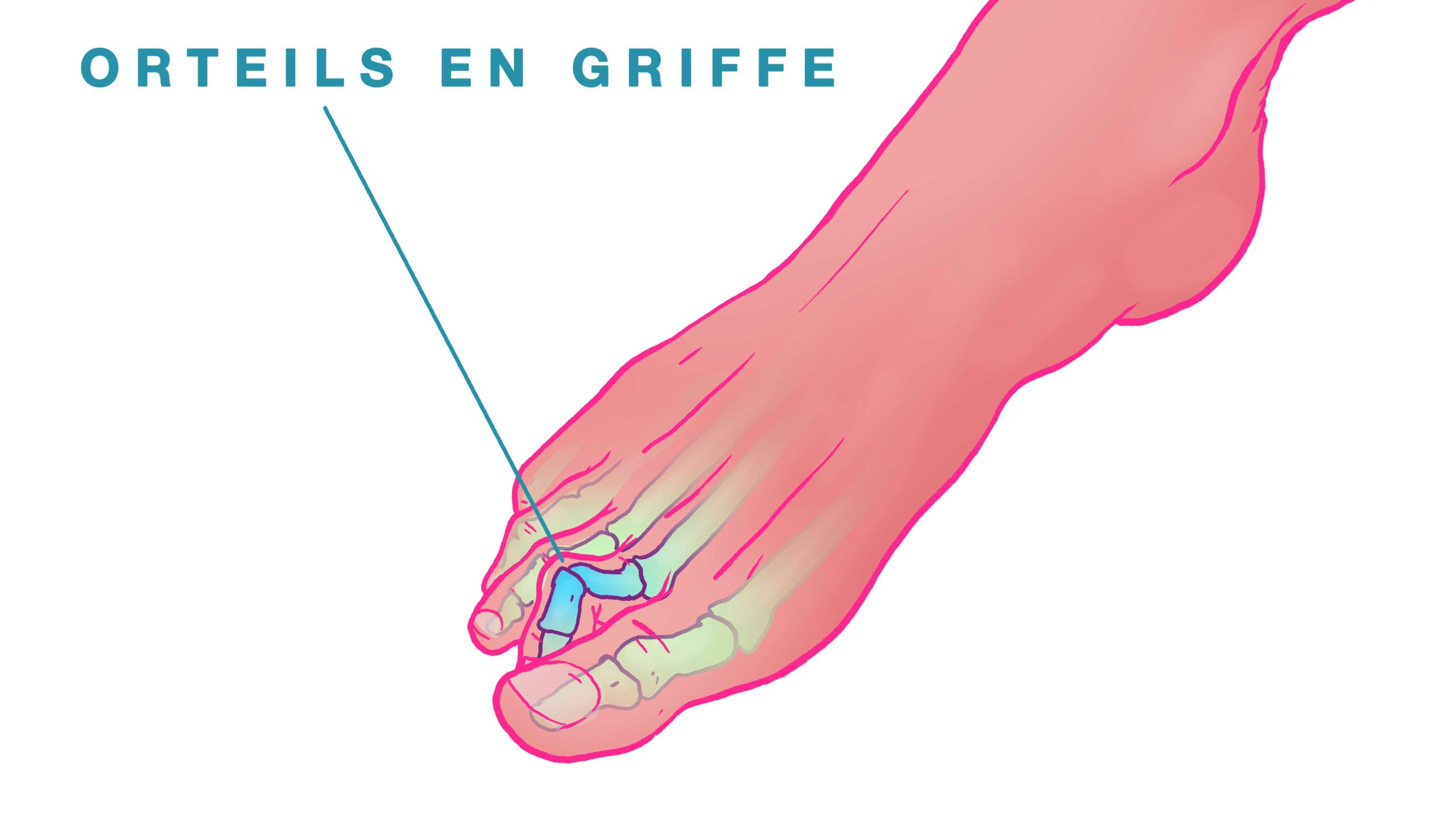Doctor Eddy Becquet
Foot surgeon
Hallux valgus Marseille
Chirurgie Orthopédique Saint Martin de Vesubie
Foot Surgeon
Doctor Becquet
Saint-George Clinic
Hall 3 - 3rd floor
2 avenue de rimiez
06100 Nice
Tel : 04 93 169 169
Chirurgie percutanée et mini-invasive pour le traitement de l'Hallux Valgus :
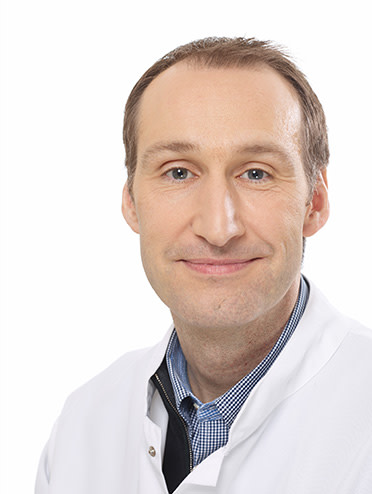
Locoregional anesthesia
Only one anesthetized limb
Operation in less than 30 minutes
Incision of 2mm to 2 cm
At home the same day
Complete patient autonomy
No rehabilitation
Immediate return to walking
Chirurgie Orthopédique Saint Martin de Vesubie
Prise en charge de l'opération du pied
Traitement de l'Hallux Valgus en 4 étapes
STEP 1
OUTPATIENT ADMISSION
Percutaneous and minimally invasive surgery allows for outpatient management.
STEP 2
ANESTHESIA
LOOREGIONALE
Popliteal block or ankle block (where only the foot is asleep)
STEP 3
L'INTERVENTION CHIRURGICALE
Takes about 30 minutes with percutaneous and minimally invasive surgery.
STEP 4
SAME DAY RELEASE
After a passage in the recovery room, exit with the analgesic device.
Chirurgie Orthopédique Saint Martin de Vesubie
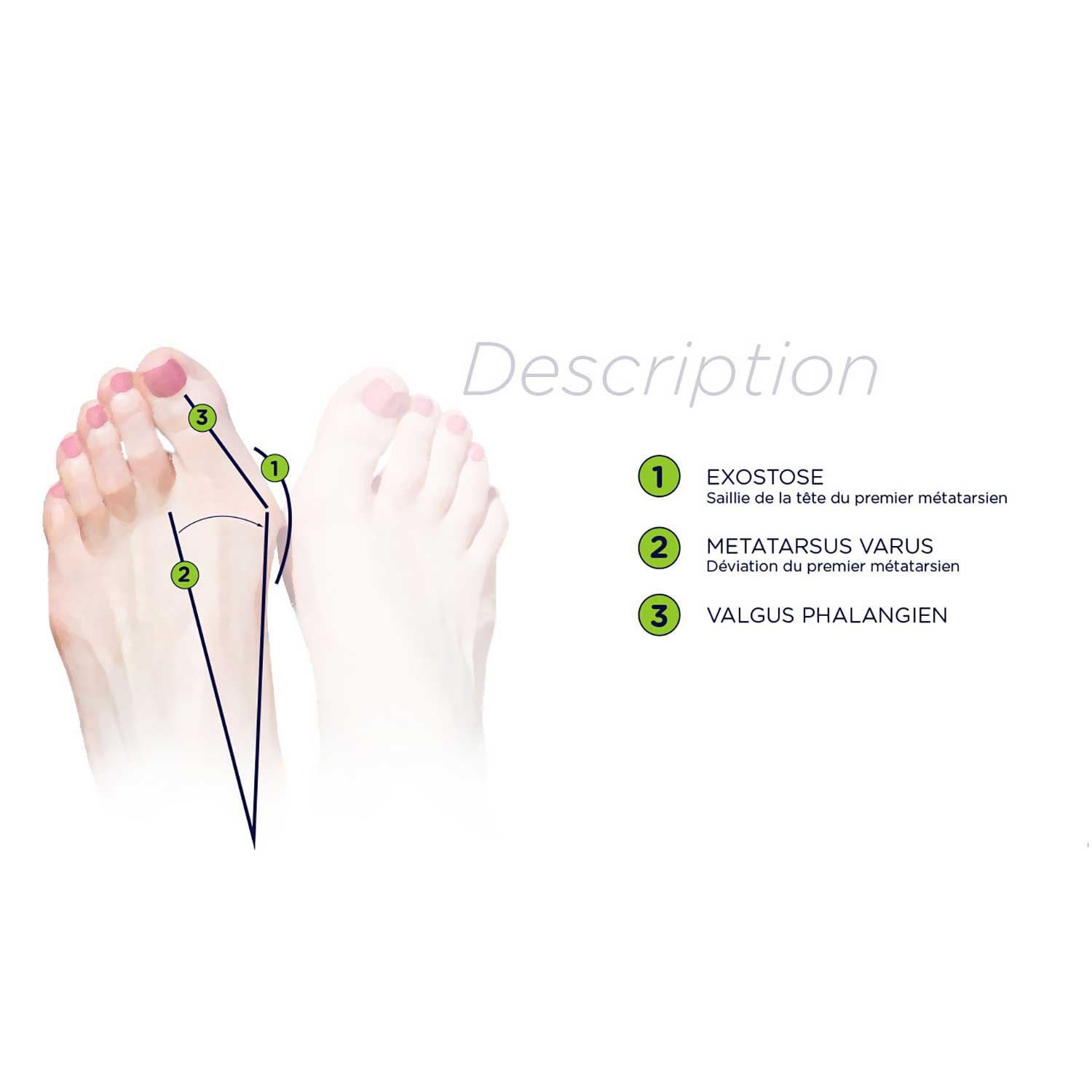
Chirurgie Orthopédique Saint Martin de Vesubie
Definition of Hallux Valgus
Dr Becquet's office
The Saint George Clinic
2 Avenue de Rimiez
06105 Nice
Tel : 04 93 169 169
Chirurgie Orthopédique Saint Martin de Vesubie
L’Hallux valgus, qu’est-ce que c’est ?
Sous son nom compliqué et savant, l’hallux valgus n’est ni plus ni moins un mal extrêmement courant mieux connu sous le sobriquet d’ « oignon ». Il consiste en une déformation du gros orteil. La bosse correspondant à la tête de l’os (le métatarse) grossit, devient inflammatoire et douloureuse.
Normal locomotion is hampered and aggravates the pain, causing a vicious circle. Wearing shoes becomes particularly painful. This disease can be associated with arthrosis of the affected joint called hallux rigidus. In this case, both ailments must be treated.
Chirurgie Orthopédique Saint Martin de Vesubie
Causes of hallux valgus
-This condition affects the female sex in more than 90 % of cases, most often around the age of 50, an age when hormonal impregnation changes due to the menopause: this would lead to hyperlaxity favoring the deformation of the big toe.
-In 30 % of cases, a family factor is found.
- Excess weight also favors the formation of hallux valgus.
-The morphotype of the foot is a key element that can explain the deformity of the big toe. Indeed, in 75 % of cases, hallux valgus is associated with an Egyptian morphotype corresponding to the case where the big toe is longer than the second toe.
With this morphology, the big toe is too long to be able to position itself normally in the shoe, in particular when it has a pointed toe: it is thus forced to deform itself by taking in width the place that it cannot take in length, hence the deformation in hallux valgus.
Conversely, the square foot (big toe the same length as the second toe) and the Greek foot (big toe shorter than the second toe) are much less likely to cause hallux valgus.
Moreover, one of the objectives of the surgery will be to obtain one of these two morphotypes when the pre-operative morphotype is Egyptian. In this way, the operation will eliminate a cause of recurrence.
-Hyperlaxity is not the only cause of the predominance of hallux valgus in women, since it is also caused by wearing shoes with pointed toes and/or high heels.
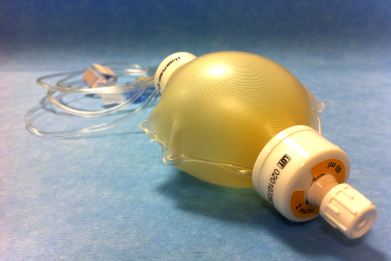
The treatment
To provide immediate relief, open-toed shoes are recommended, or alternatively, soft, flat shoes.
Painkillers may also be prescribed in some cases.
A podiatrist can also help to counteract the deformity of the toes with orthoplastics. This is only possible at the very beginning of the deformity, as this technique is not effective on a deformity that has already been fixed.
Moreover, wearing orthopedic insoles can be relevant when the toes are already clawed and the joints are already in a pronounced inflammatory state. This allows to reduce the pressure on these joints and thus to reduce this type of pain.
These treatments are symptomatic and will not prevent the long-term deterioration of the patient's foot. The only effective solution is surgery.
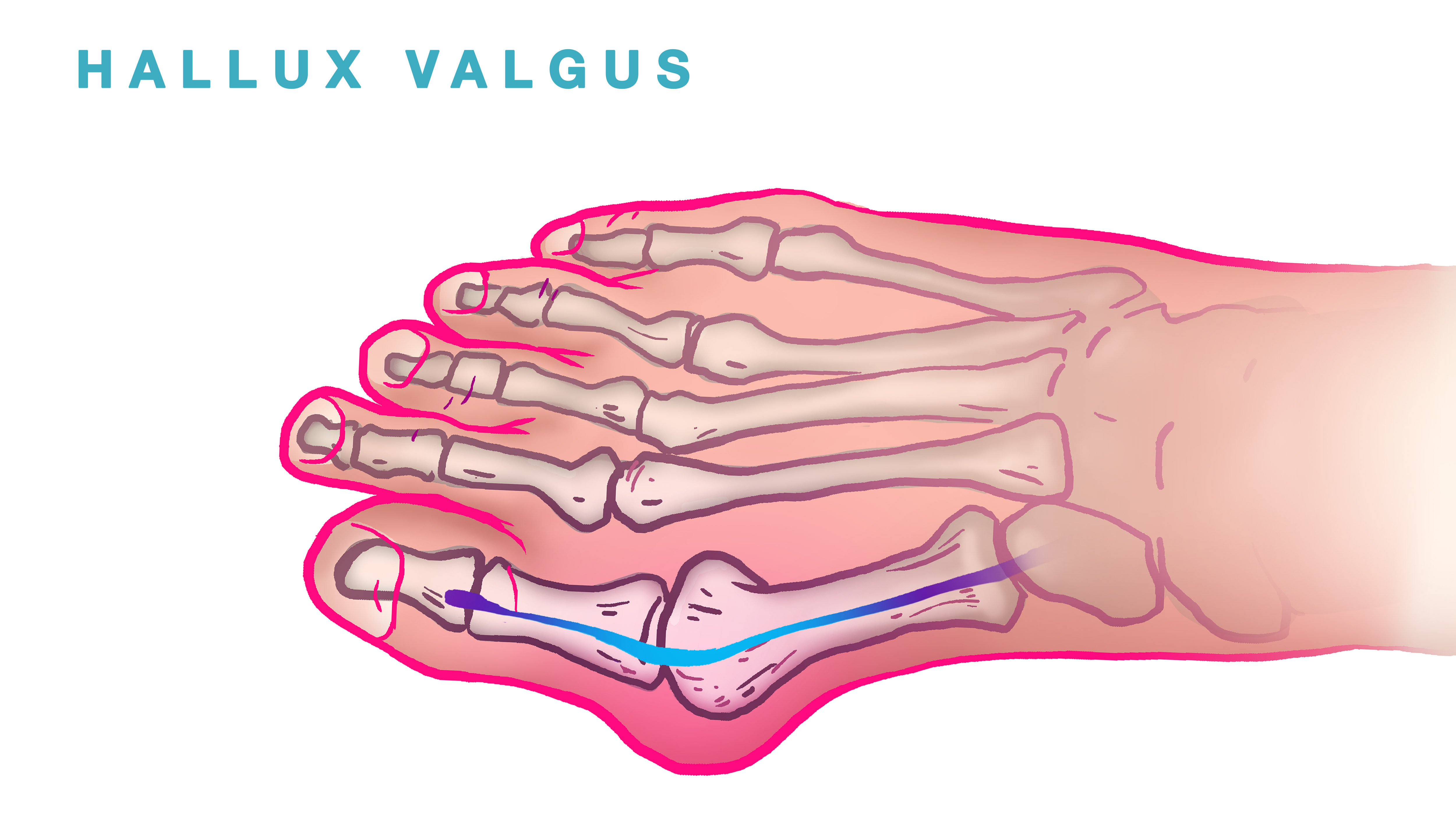
How to treat hallux valgus?
If the so-called symptomatic treatments do not succeed in stopping the evolution of the deformities and pain, only surgery can truly cure hallux valgus.
The choice of technique is made with the practitioner. There are minimally invasive techniques, with incisions of a maximum of 2 centimeters, and percutaneous techniques, which involve making very small incisions, of the order of a millimeter.
The procedure is performed under local anesthesia. Sedation can be offered to the patient if desired. The patient can leave the hospital the same day.
Spontaneous evolution of hallux valgus
At the beginning of the evolution, the deformity of the big toe is isolated: the main reason for consultation remains the pain located opposite the exostosis, where one finds most often an inflammatory bursitis which can ulcerate and lead to an infection. In addition to the classic deformity, there may be a rotation disorder: the toe turns on itself, so that the nail no longer looks towards the zenith.
The deformity continues to evolve on its own, so much so that the hallux valgus ends up deviating the other toes laterally. This is how the 2nd ray syndrome appears, corresponding to the appearance of a claw on the 2nd toe pushed by the big toe which takes its place.
This deformity, initially limited to the 2nd toe, progressively extends to the entire forefoot.
The lateral toes retracted in the form of claws will come into conflict with the shoe, resulting in painful dorsal corns.
At the same time, under the effect of the claw, the metatarsophalangeal joint will subluxate or even dislocate, giving rise to metatarsalgia (pain when pressing on the metatarsal head).
It is always preferable to correct deformities when they are limited to the big toe, which simplifies the surgical procedure but also the postoperative course and reduces the recurrence rate.
What are the objectives of surgical treatment?
To reduce the deformity of the big toe, it will be necessary to reduce the excessive gap between the 1st and 2nd metatarsals (reduction of the metatarsus varus). To do this, a Scarf osteotomy is performed, allowing the translation of the 1st metatarsal towards the 2nd metatarsal.
The second bone procedure will be performed in the 1st phalanx by an osteotomy, allowing to achieve three objectives:
- reduction of the phalangeal valgus (= deviation of the 1st phalanx) by cutting a wedge-shaped segment of bone
- a shortening of the 1st phalanx allowing, in the case of an Egyptian foot, which could be a source of postoperative recurrence if not corrected, to transform it into a square or Greek foot.
- a correction of a possible rotation disorder in the big toe, in order to obtain a nail looking towards the zenith in post-operation.
To be successful, this surgical treatment must be accompanied by a rigorous postoperative protocol, both for the resumption of support and for the treatment of edema and pain.
Surgical techniques.
The minimally invasive and percutaneous techniques mentioned above are interesting, but more difficult to implement for the practitioner.
-Percutaneous surgery
This technique is only 15 years old in Europe. It is not specific to the treatment of hallux valgus nor is it systematic. As its name indicates, it is performed through the skin, with miniature burs introduced after making very small incisions with mini scalpels. The surgeon cannot directly visualize the operation. He has of course several tools to do so:
The first is fluoroscopy. It consists of using a very low-powered X-ray machine in order to make the exposure of the patient and especially of the surgeon completely acceptable. Of course, this technique only allows the visualization of bones. It is mainly a means of control for an experienced surgeon who can thus see the operated areas.
Le deuxième est l'utilisation par le chirurgien son toucher et de son ressenti. La contrepartie est donc que seuls des chirurgiens très expérimentés peuvent utiliser la technique d’intervention percutanée.
Obviously, when properly performed, it has only advantages. It is minimally invasive and allows a quick recovery after the operation.
-Minimally invasive surgery
Cette technique ne demande que des incisions inférieures à 2 centimètres. En revanche, le reste de l’opération est comparable à une chirurgie « classique », avec quelques entrées percutanées. L’ostéotomie en mini-chevron est par exemple une technique développée récemment qui permet de minimiser fortement la taille du champ opératoire.

When to consult?
Consultation is highly recommended when the pain is embarrassing or even disabling when walking or putting on shoes. The pain may be more intense on the other toes, when they curl up into claws, than on the big toe itself, if the disease is already advanced.
It is therefore necessary to explain to the patient that the cure can only come from the treatment of the big toe, even if it is the other toes that may cause him more pain at the time of diagnosis.
Some people, especially young women, also consult for aesthetic reasons. Surgery to treat hallux valgus is then totally contraindicated.
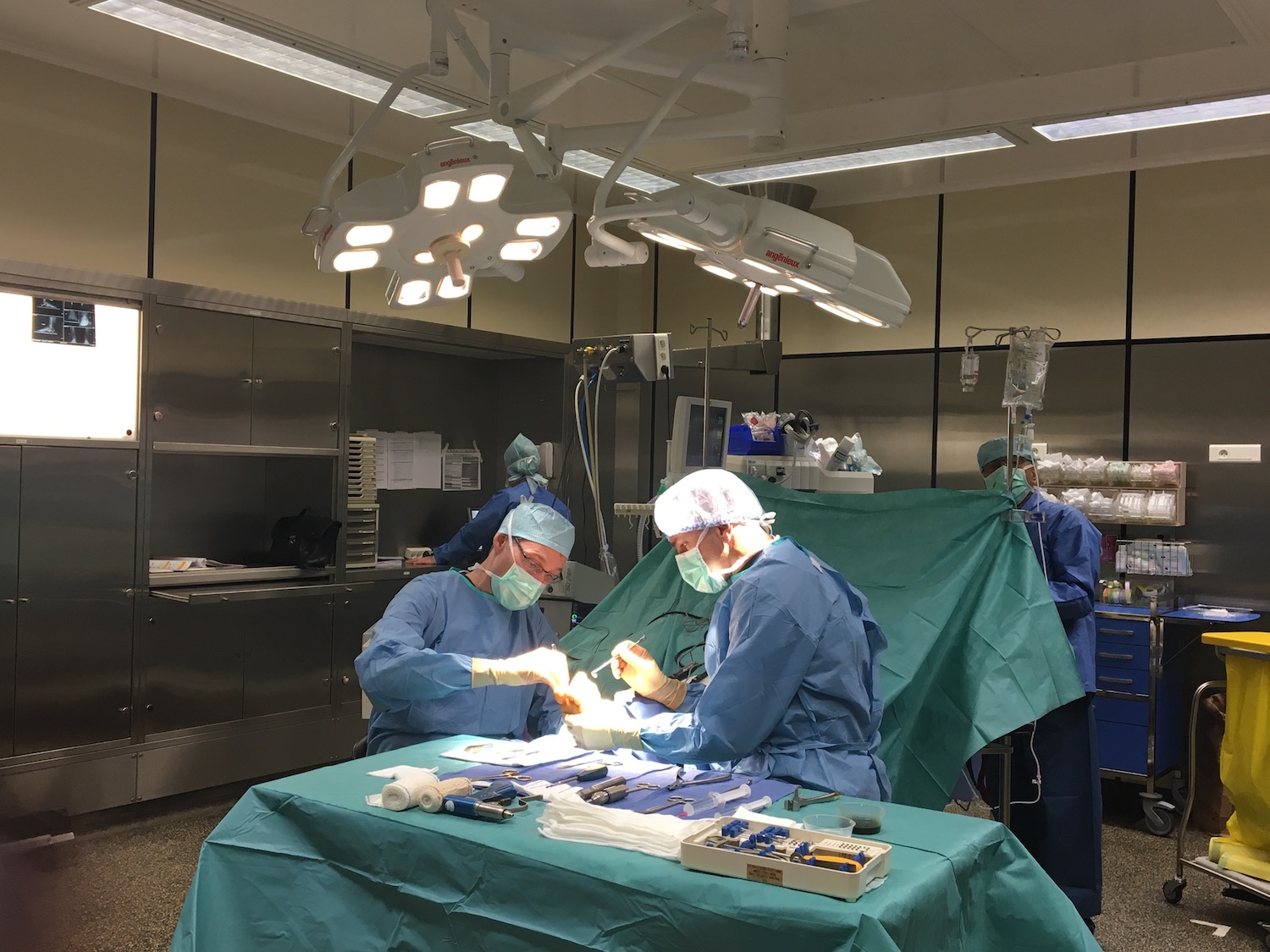
What are the criteria for surgery?
The intensity of the pain is the main criterion. However, one should not wait until the pain becomes unbearable, as the operation may become more cumbersome with time.
It is indeed easier to intervene on an early hallux valgus than on the same disease that has evolved to the point of deforming all or part of the other toes.
This is all the more relevant as considerable progress has been made in recent years, particularly with regard to the invasiveness of the procedures, which minimizes the postoperative sequelae.
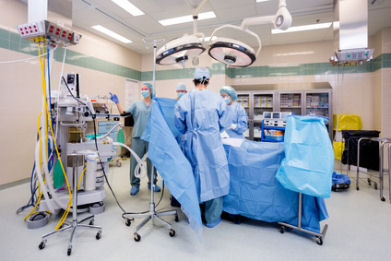
What are the advantages of these techniques for the treatment of hallux valgus?
The main advantages of these techniques are their minimally invasive nature.
-Pain is considerably reduced, as well as postoperative swelling and bruising.
-The resumption of support is immediately possible
-Outpatient care
-Une recupération plus rapide après l'opération
Chirurgie Orthopédique Saint Martin de Vesubie
Foot surgeon
at the Saint George clinic in Nice
Doctor
Eddy Becquet

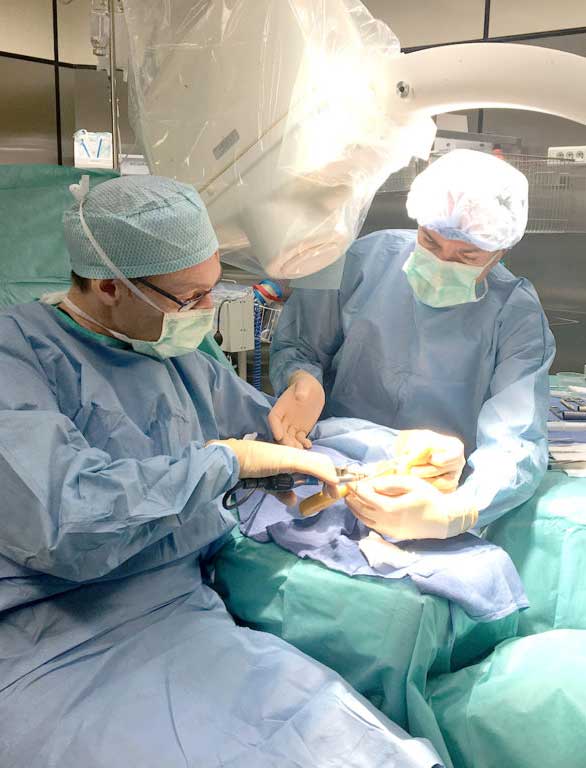
His method
Who is Dr. Becquet?
Depuis plus de 15 ans, Docteur Becquet se passionne pour la chirurgie de l'hallux valgus. Conscient que les techniques traditionnelles pour opérer cette pathologie donnaient des suites longues et douloureuses, il s'est intéressé très rapidement aux techniques mini-invasive et percutanée qui permettent au chirurgien de travailler avec de petites incisions : l'impact traumatique est bien moindre sur l'hallux valgus opéré et permet ainsi une récupération rapide, tant sur la reprise de l'appui qui est immédiat qu'en matière de douleurs qui deviennent inexistantes ou très supportables.
Chirurgie Orthopédique Saint Martin de Vesubie
Pour obtenir une récupération encore plus rapide après chirurgie de l'hallux valgus, le Docteur Becquet, toujours à la recherche d'innovation, est devenu adepte du Fast-Track. Il s'agit d'une méthode de prise en charge du patient visant à prendre les mesures nécessaires pour maîtriser son stress post-opératoire afin de lui permettre une récupération plus rapide et diminuer sensiblement le risque de complications. Ainsi dans le cadre de la chirurgie de l'hallux valgus, le Docteur Becquet a mis en place avec son équipe une prise en charge de type FAST-TRACK associant :
Une information détaillée tant orale qu'écrite donnée au patient tout au long de sa prise en charge, contribuant ainsi à le sécuriser mais aussi à le rendre maître et acteur de ses soins
Minimally invasive and percutaneous surgery is much less traumatic on the tissues thanks to the miniaturization of the incisions
L'anesthésie loco-régionale qui d'une part a facilité la prise en charge en ambulatoire et d'autre part a permis d'optimiser le contrôle de la douleur par un réveil très progressif du pied opéré
L'hospitalisation ambulatoire, en réduisant à quelques heures le passage du patient à la clinique, permet de diminuer sensiblement le caractère anxiogène d'une hospitalisation. En effet le patient préfère retrouver rapidement son environnement habituel.
The personalized follow-up at home is reassuring for the patient. It will therefore promote rapid recovery after surgery:
– par l'intervention d'un prestataire de service et son équipe d'infirmiers libéraux qui fera le relais entre le patient et le chirurgien
- Daily visits to the patient's home thanks to a Smartphone application
- provider coordinator available 24 hours a day in case of problems
– rapport quotidien au chirurgien sur l'évolution post-opératoire de son patient
– informations orales et écrites données au patient sur son suivi opératoire ; l'information donnée par le prestataire et son équipe d'infirmiers est strictement identique à celle donnée par le chirurgien pour éviter toute discordance dans le discours qui est source d'anxiété chez le patient
– mise en place et suivi d'un diffuseur antalgique pour optimiser la gestion de la douleur post-opératoire, déjà bien maîtrisée par l'association technique mini-invasive et percutanée et l'anesthésie loco-régionale
Chirurgie Orthopédique Saint Martin de Vesubie
CURRICULUM VITAE
Former intern of the hospitals of Lille 1997
Former chief of clinic of the hospitals of Lille 2002
Appointed Specialist in Hand and Foot Surgery 2002
Inter-university diploma in surgical pathology of the hand 2002
University Diploma in Vascular and Nerve Microsurgery 2000
University Diploma in Legal Compensation for Personal Injury 2004
Inter-university diploma in arthroscopy 2002
Lecturer for the National Diploma of Orthopaedic and Traumatological Surgery 2003
Lecturer in Anatomy of the Hand and Foot 2002
Associate member of the French Society of Hand Surgery
Member of the French Association of Foot Surgery
Chirurgie Orthopédique Saint Martin de Vesubie
Cabinet
Retrouvez votre orthopédiste au 3ème étage du Hall 3 et n'oubliez pas votre carte vitale !
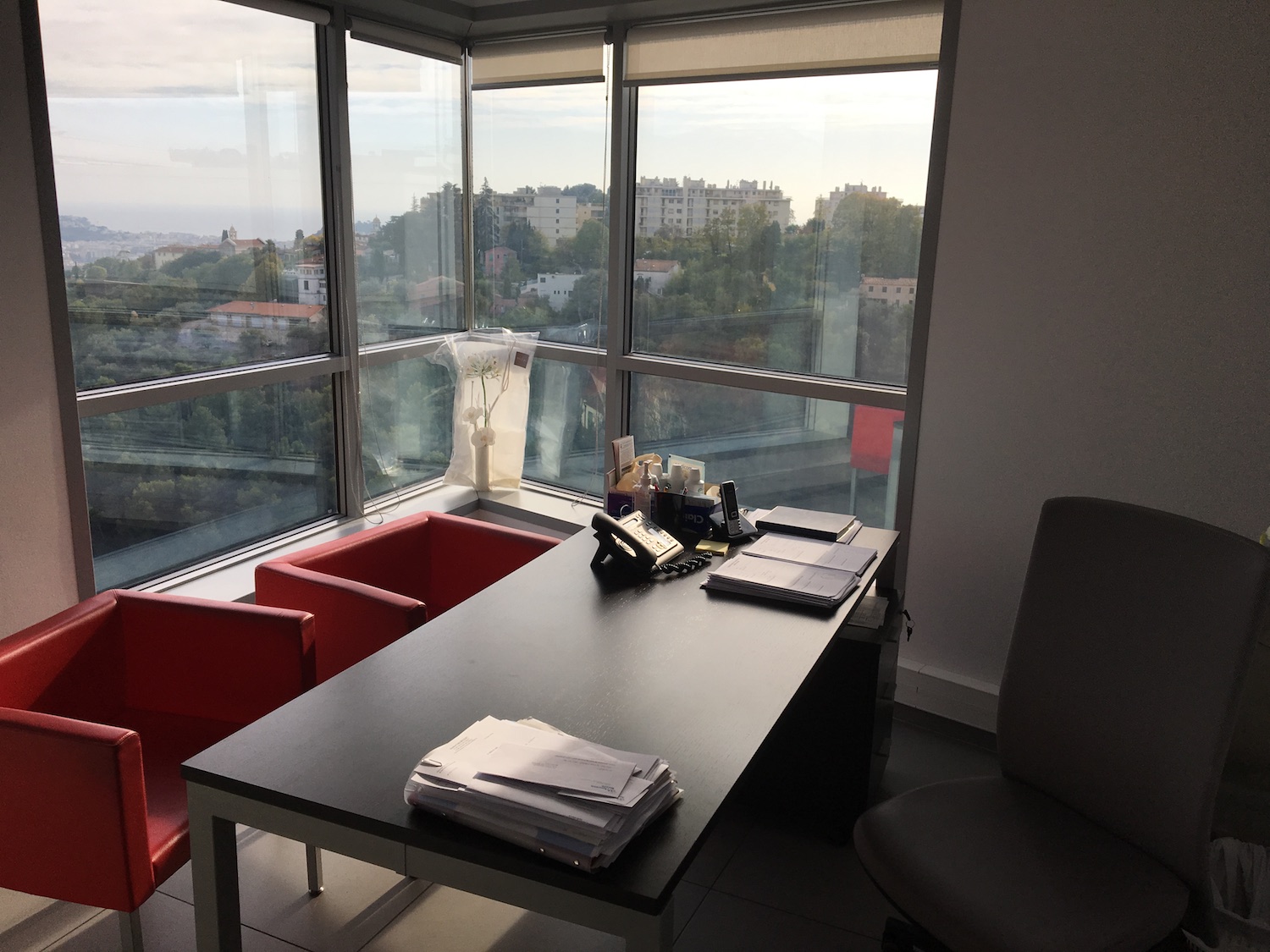
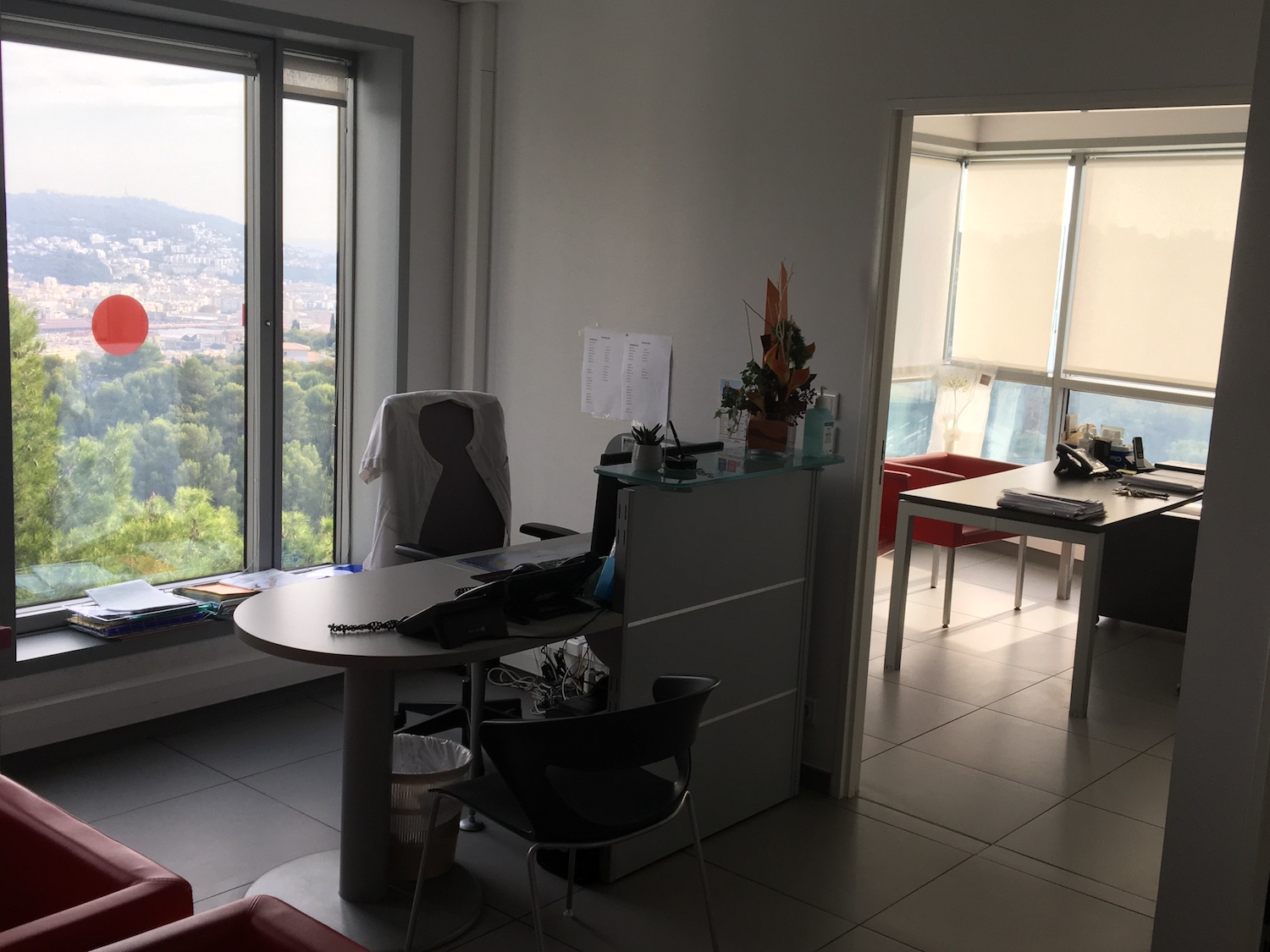
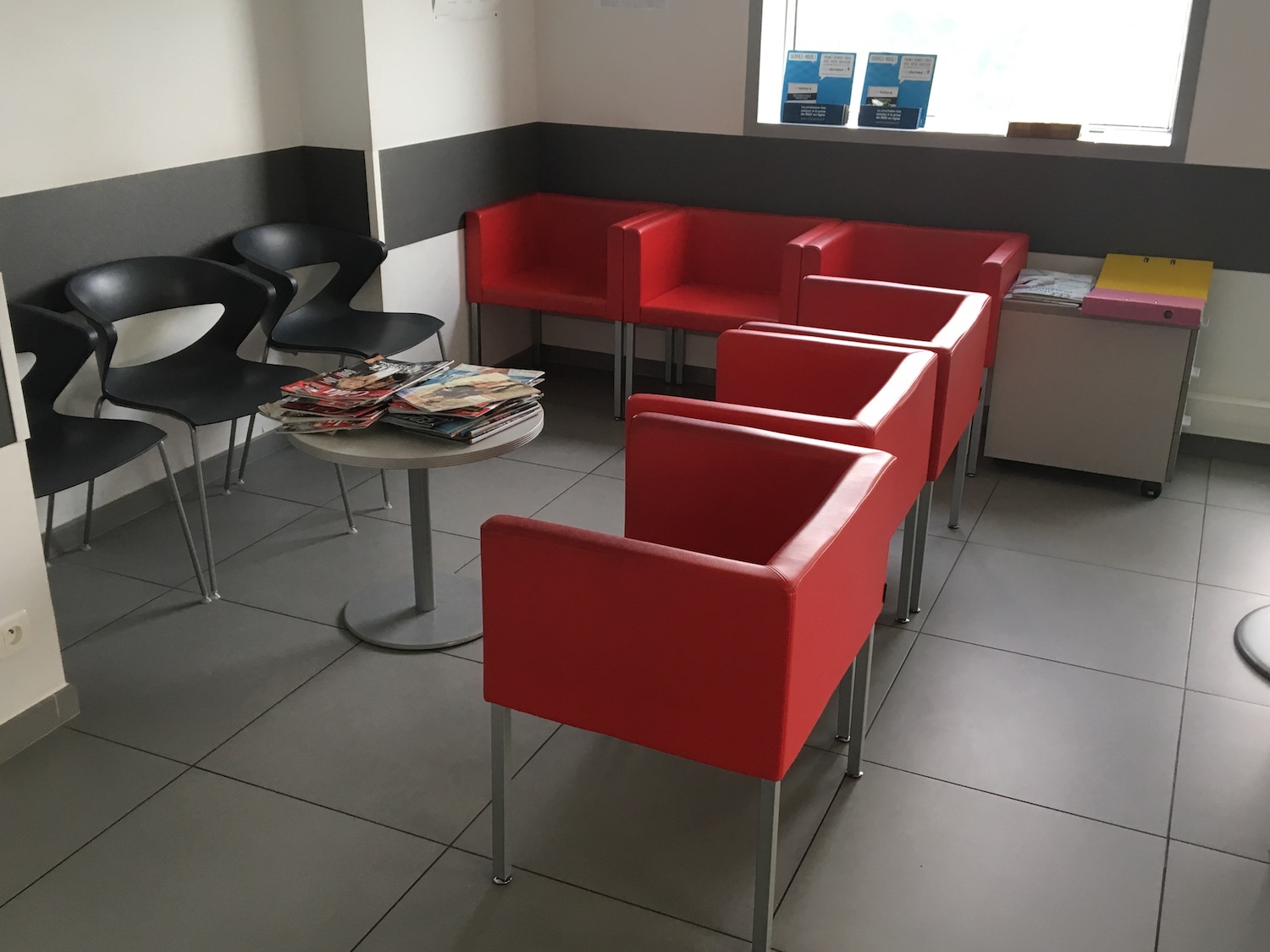

Chirurgie Orthopédique Saint Martin de Vesubie
Foot surgery | Hallux Valgus | Nice
Dr Becquet's office
The Saint George Clinic
2 Avenue de Rimiez
06105 Nice
Tel : 04 93 169 169
Chirurgie Orthopédique Saint Martin de Vesubie
Minimally invasive and percutaneous surgery
Outpatient procedure
Reprise immédiate de l'appui
An operation taking half an hour.
The operation can be performed by percutaneous surgery (incision of the order of a millimeter) or minimally invasive (incision of the order of a centimeter)

Chirurgie Orthopédique Saint Martin de Vesubie
When is it necessary to have surgery?
The essential criterion is the level of pain that the patient complains of. For a similar deformity, the feeling of pain can be completely different from one person to another. When walking and shoeing become painful, it is essential to put the option of surgery on the table.
A hallux valgus cannot resolve itself, it will necessarily deteriorate more or less quickly and progressively evolve towards a self-deformation.
The earlier the surgery is performed, the more likely it is to permanently prevent recurrence and the less invasive it will be.
Indeed, the new techniques of intervention can be used, they are much less cumbersome and have postoperative consequences in general limited.
Percutaneous surgery
This technique appeared a few years ago and is increasingly used for hallux valgus. When properly performed, it offers many advantages. It consists of operating through the skin, making mini incisions just sufficient to pass miniaturized instruments.
Il n’est pas possible pour le chirurgien de voir directement ce qu’il réalise. Son toucher et son expérience vont être primordiaux. Néanmoins il dispose d’une technique complémentaire qui lui permet malgré tout d’avoir une vision sur le déroulement de l’opération : l’amplificateur de brillance par fluoroscopie.
Elle consiste à s’aider d'un appareil à rayon X très peu puissant mais qui permet de visualiser un élément clé dans le traitement de l’hallux valgus : les os. L’appareil est bien sûr qualifié et stérilisé, et son taux de rayons est suffisamment faible pour que les chirurgiens puissent l’utiliser very regularly without risk. Note that this technique is only an aid and an extension of the surgeon's feeling. Nothing can replace his know-how and experience.
Les intérêts de cette technique sont évidents : les incisions sont très réduites, les douleurs sont moindres et la récupération est plus rapide. Elle permet d’éviter une hospitalisation.
What will be the level of pain?
The techniques used in the past have tarnished the image of this type of surgery to treat hallux valgus. Mini-invasive techniques and advances in local anesthesia allow for operations with very little pain in the overwhelming majority of cases.
La sensibilité à la douleur n’étant pas la même selon les personnes, il n’est pas possible de garantir une intervention avec « zéro douleur ». Toutefois la pratique de cette intervention uniquement en ambulatoire est un signe que la gestion de la douleur post opératoire ne pose en général aucun problème sérieux.
The management of pain is done very seriously in spite of everything. The quality of the local anesthesia will of course make it possible to feel no pain during the operation, but its effects will last at least 12 hours, limiting the pain that would immediately follow the operation. It is in fact in these hours following the operation that the pain can reappear, and the fact of having a prolonged analgesia in the operated area makes it possible to reduce post-operation stress and anxiety.
This device is complemented by a special device that will help the patient manage any pain once they leave the hospital. In the past, the patient had to stay in the clinic with an infusion to get an electric syringe.
Now the patient has a single-use analgesic diffuser which, with the help of home nurses, allows the patient to return home as soon as possible. This has several important advantages. The patient can indeed
- Eat at home and sleep outside the clinic
- To be quiet compared to the noisy environment of a clinic
- Be surrounded by your loved ones without restriction.
Operations to treat hallux valgus
When symptomatic treatment options are exhausted, the only option left is surgery. It is the only way to eradicate the cause and the pain. The technique to be used must be shared between the patient and the practitioner. There are several approaches. The first is the percutaneous technique, which leaves only almost invisible incisions, and the second is called mini-invasive, and will be performed with incisions limited to 2 centimeters.
The procedures are performed with local anesthesia and sedation (optional). The patient does not need to stay at the clinic in the evening, and can leave immediately after the procedure.
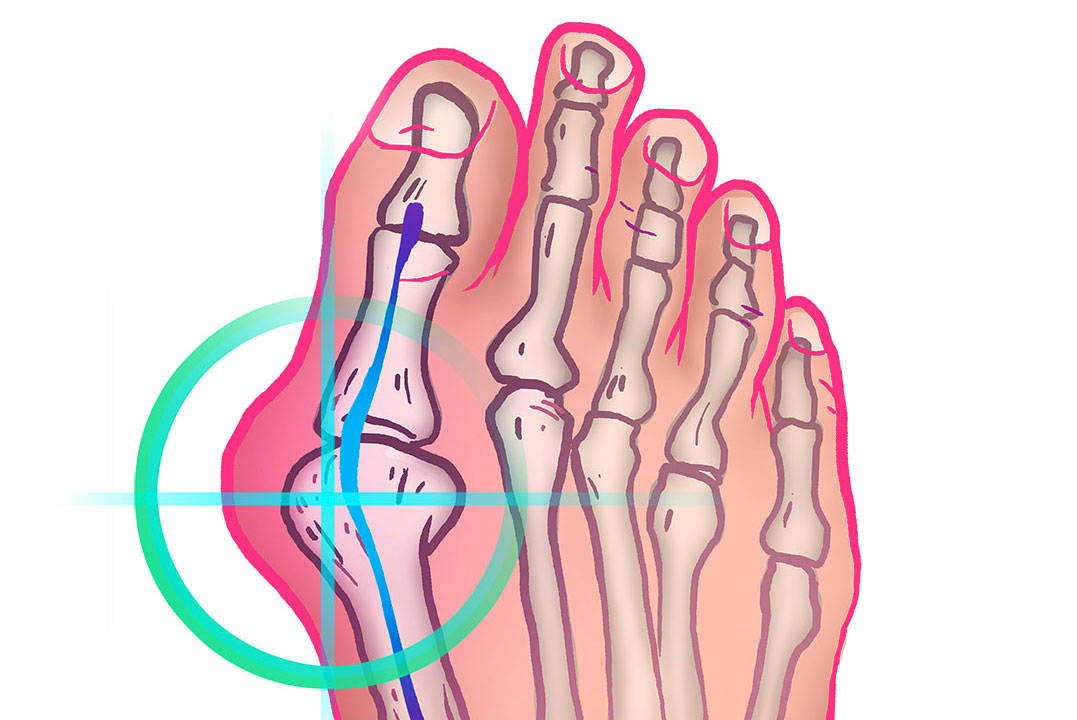
The mini-invasive technique
La chirurgie est dite mini invasive quand les incisions pratiquées sont de l'ordre de 2 centimètres. Toutefois les techniques employées à l'intérieur du pied restent similaires à la chirurgie dite classique.
Once the incisions have been made, the surgeon will carry out the operation. By performing osteotomies with specific instruments, most of which are inspired by the percutaneous technique.
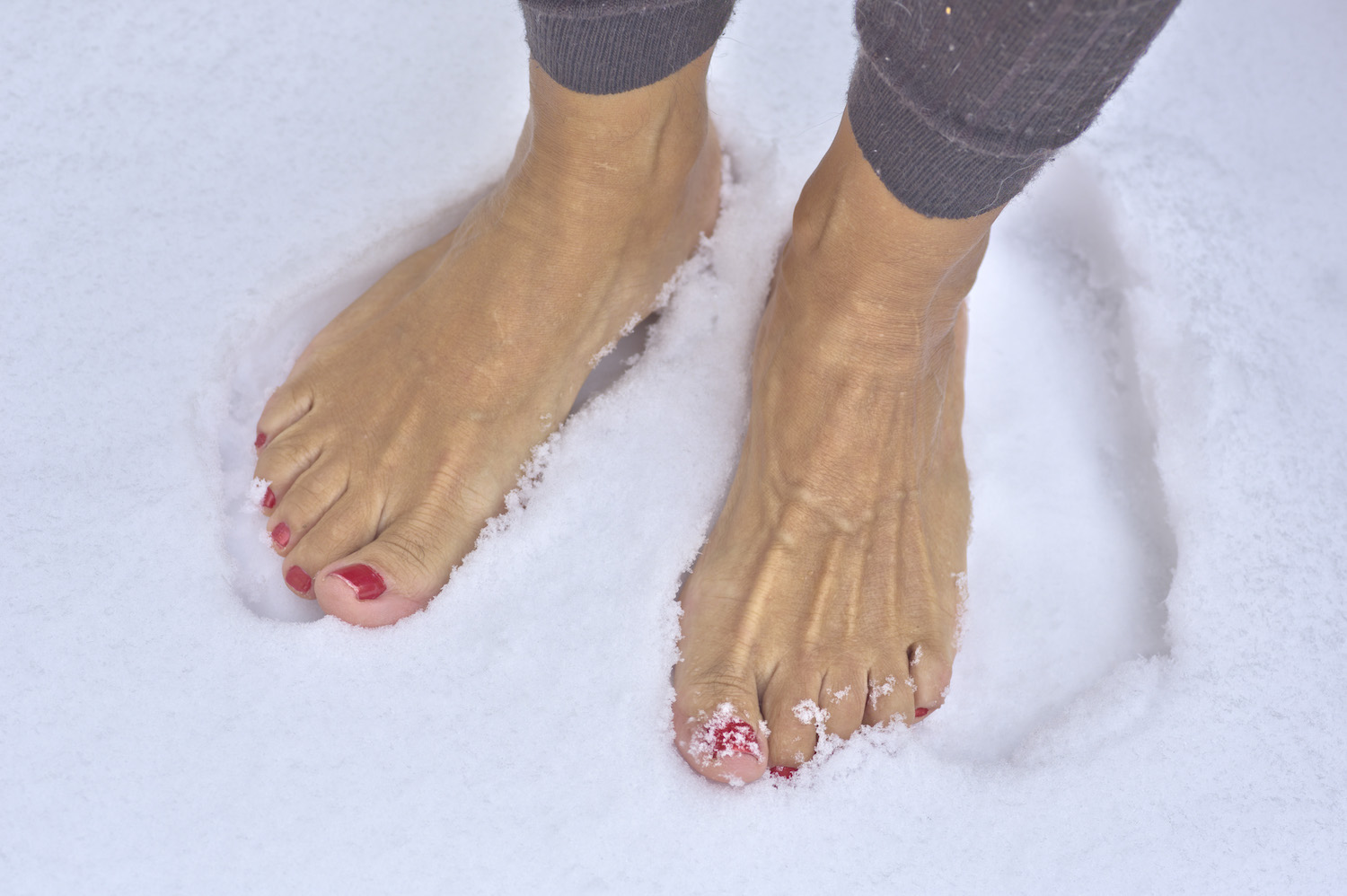
How long will it take for me to walk normally?
Les techniques employées permettent de reprendre appui sur son pied juste après l’opération, avec l’aide d’une chaussure spécifique que le patient devra garder environ une semaine. La reprise d’appui doit se faire avec l’ensemble de la plante du pied. En effet, il ne faut pas marcher en appuyant sur le côté du pied ou sur le talon. Cela n’est pas forcément évident et beaucoup de patients vont instinctivement ne pas respecter cette consigne. Il est normal d’appréhender la reprise de la marche après l’opération ; aussi on préconise un protocole progressif pour rassurer les patients.
During the first week, walking is allowed but must be limited to what is strictly necessary. It is recommended not to leave your home. Treading and prolonged standing without walking should be avoided. When the patient sits or lies down, it is recommended to elevate the foot and leg.
The following week, the patient can walk outside the home, gradually. Walking periods should be limited to about 15 minutes, but should not exceed a total of two hours per day.
Augmenter progressivement sa quantité de marche en fonction de son ressenti. Il est conseillé d'abandonner définitivement la chaussure spéciale et de mettre une chaussure souple et plate comme des « baskets ».
L’arrêt de travail dépend de l’activité. Le travail peut être repris au bout de deux semaines dans les cas favorables. Il ne faut bien sûr pas que l’activité nécessite de beaucoup marcher ou de « piétiner » de manière répétitive. Dans le cas contraire, la période de convalescence devra être prolongée. En cas de reprise précoce du travail, il faut que la surélévation du pied soit possible quand le patient sera assis.
In general, as a precaution, the prescribed time off work is about three weeks.

New techniques for hallux valgus
For several years, much less invasive techniques have been developed to treat hallux valgus. They consist in making very small incisions instead of having a large operating field. They are therefore more complicated for the surgeon to implement.
The benefits of minimally invasive and percutaneous procedures for the treatment of hallux valgus
The percutaneous technique is very recent in Europe. It is a tool that must be adapted to the procedure. It is not systematically used for hallux valgus and should not be. It consists of performing an operation through the skin, using miniaturized instruments dedicated to this type of surgery.
Ceci permet :
-The fact that the patient does not remain hospitalized
-Prompt recovery
-Less swelling and pain
-A possibility to walk very quickly after the operation.
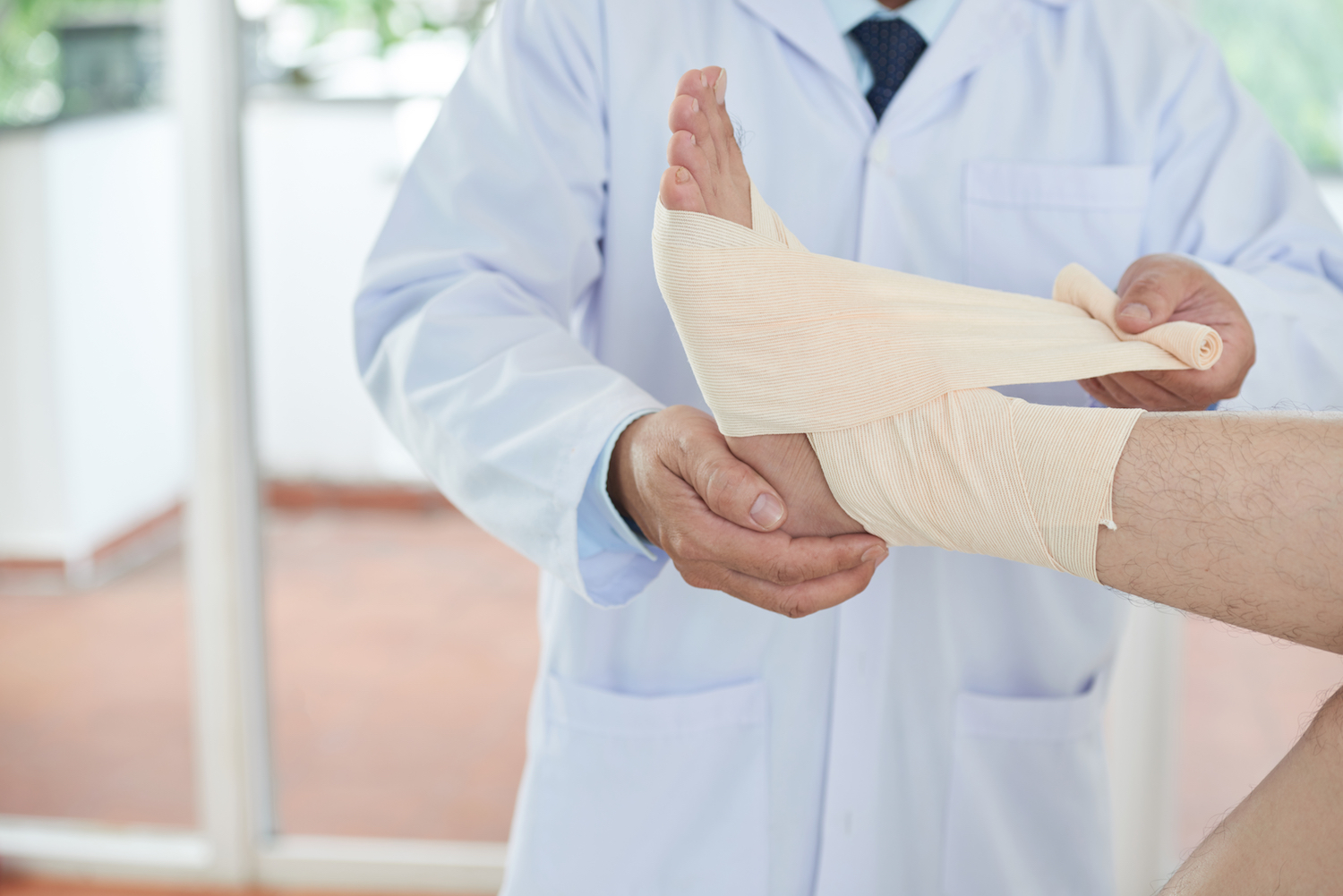
How to manage dressings?
One week after the operation, the first dressing will be redone by the surgeon. The following ones will be done by a nurse. The liberal nurses are perfectly qualified to carry out these new dressings. They will be changed every two days for two weeks.
Au bout de deux semaines, les fils seront enlevés par l’infirmière et vous pourrez alors reprendre une douche et mouiller l'intégralité du pied opéré – le séchage du pied (avec éventuellement l'usage d'un sèche cheveux) est important pour éviter tout phénomène de macération de la cicatrice (présence de croutes lorsque la cicatrice est encore récente). Si des broches extériorisées ont été posées, votre cicatrice pourra également être mouillée à condition de bien sécher l’extrémité apparente de la broche.
Chirurgie Orthopédique Saint Martin de Vesubie
La récupération après chirurgie :
a rapid phase
THE MODALITIES OF A RETURN HOME
Chirurgie Orthopédique Saint Martin de Vesubie
Supervised by health professionals, specialists in percutaneous surgery in the Nice area
Chirurgie Orthopédique Saint Martin de Vesubie
Successful return home is essential
This is an essential condition for recovery and success, and it is important to support it. A close follow-up is then deployed through the interventions of a dedicated team of nurses or private nurses. They will act as intermediaries between the surgeon and the patient on a daily basis:
Available at any time of the day or night
Presence several times a day at home.
Daily feedback to the surgeon on the patient's progress
Rigorous note-taking of the postoperative follow-up and written and oral communication of the surgeon's instructions and information.
Provision of an analgesic diffuser for good management of possible postoperative pain

Chirurgie Orthopédique Saint Martin de Vesubie
Pain management after surgery:
Lorsque le patient quitte l’hôpital ou la clinique, il dispose d’un dispositif spécifique qui permet une diffusion progressive de produits anti-douleur, par voie intraveineuse. Cela permet de compléter dans la durer, l'effet analgésique de l'anesthésie. Les antalgiques utilisés ne sont pas dérivés de la morphine, pour éviter les intolérances. Ce dispositif est un progrès dans la mesure où grâce à sa miniaturisation, le patient n'est pas obligé à rester allongé, contrairement aux perfusions classiques. Ce dispositif facilite la convalescence du patient et le rassure. Les infirmières libérales qui vont suivre le patient à son retour sont parfaitement formées à son utilisation.
Le patient peut ainsi :
-Staying at home at night, and avoiding the noise and anxiety of the hospital environment
-Being surrounded by loved ones right after the operation, which reassures him and facilitates his recovery.

Management of postoperative edema
Pain management cannot be fully effective if instructions for limiting foot swelling are not followed. Swelling will distend the tissue and cause pain.
Pour s’en prémunir les habitudes suivantes sont à mettre en place dès la fin de l’opération :
1) Elevate the operated limb as soon as the patient sits or lies down. In fact, venous return is favored, which will help limit the edema.
2) Le suivi du protocole de reprise de la locomotion dans les trois semaines suivant l’intervention. Le non-respect de ce protocole peut engendrer une résurgence de l’œdème et donc des douleurs. Pour rappel, voici les grandes lignes de ce protocole :
Foot support should be limited to the strict minimum during the first week, and the patient should remain at home. Standing without walking or stomping should be avoided.
La deuxième semaine, le patient peut sortir de chez lui en limitant le temps de marche à des périodes d’environ un quart d’heure, pas plus de deux heures par jour. La chaussure post opératoire pourra alors être enlevée définitivement au profit de chaussures souples, type "Basket".
During the third week, the patient gradually increases his walking time according to his feeling.
3) Self-education which will consist of
-Quickly return to a flat footed stance after the operation
-Put on soft shoes after one week
-Resume walking after one week away from home
4) Icing, which consists of applying a cold pack when the patient's foot is elevated in a sitting or lying position. This will limit swelling and inflammation and therefore the onset of pain.

Zoom on the analgesic diffuser
C’est un matériel à usage unique constitué d’un mini réservoir et d'une tubulure permettant la diffusion du produit.
Through a strong network of trained nurses, the reservoir is filled once a day and the patient's pain level is reviewed.
This diffuser is an important progress in the management of pain and allows the patient to go home, reassured, and as soon as possible.
When the device is removed, conventional oral painkillers are prescribed for about four days. After this period, painkillers must be taken according to the patient's feelings.
The three provisions aimed at limiting pain (local anaesthesia, portable diffuser and traditional oral treatment) follow a philosophy that aims to avoid the onset of pain and to maintain a good level of comfort for the patient.
The use of Fast Track, or rapid recovery after surgery.
Fast-track is a protocol created 20 years ago in Denmark. It aims to restore the patient's autonomy as quickly as possible after an operation, by taking multifactorial responsibility for his recovery. It covers measures taken during the operation and in postoperative management, as well as pain relief devices.
Quel est l’objectif du fast-track ?
The objective is to limit the psychological and physical stress related to an operation. This allows for a better recovery and increases the chances of success. It also allows to limit the risks linked to prolonged hospitalizations (nosocomial diseases, circulatory disorders etc.)
Quelle est sa déclinaison pour le traitement de l’hallus valgus ?
-The use of minimally invasive surgical techniques such as percutaneous and mini-invasive techniques. They are much less aggressive for tissues such as skin, tendons or muscles and therefore allow a good recovery.
-L’emploi d’une anesthésie loco-régionale qui implique un endormissement limité au strict nécessaire. Cela permet d’éviter une anesthésie générale source de lourdeur et de complication. L’anesthésie loco régionale permet également de garder un bon niveau d’analgésie post opératoire pendant plusieurs heures ;
-The hospitalization in day hospital that these new techniques allow and the progress in anesthesia. The patient can quickly return to his normal routine, which reduces his stress and anxiety. This obviously contributes to a better recovery in the best conditions.
A close follow-up at the patient's home with a team of providers. They provide daily monitoring and a reinforced link with the care team and the surgeon. This makes it possible to secure the crucial weeks following the operation.
-Reinforced coordination between the perioperative staff and the hospital teams. This allows for a permanent follow-up of the patients. The messages given to the patient are perfectly coherent, which aims to reassure them.
-The patient does not just undergo the procedure. He is an actor and participates in his complete recovery. The patient is put in a situation to manage his own pain, thanks to a scale used with the help of the liberal nurses.
-Finally, it should be remembered that the level of information provided to the patient on the complete course of his or her care is essential to ensure that the care is perfectly mastered and that the complementary measures to be implemented after the operation are well followed.
To contact the
Chirurgien du Pied | Hallux valgus Marseille
Saint-George Polyclinic
Hall 3 - 3rd floor
2 avenue de rimiez
06105 Nice
Phone
04 93 169 169

